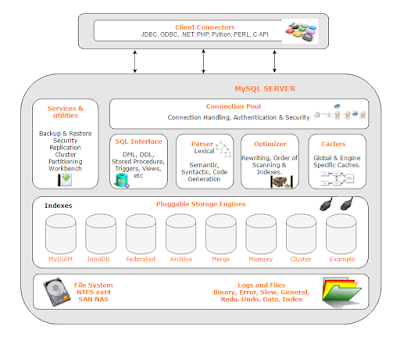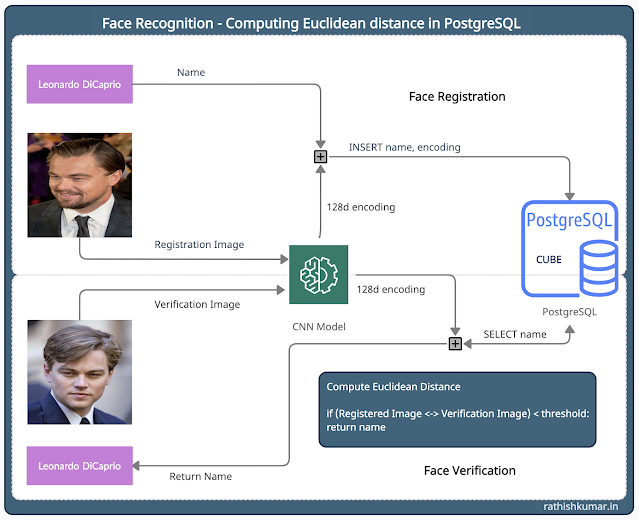 |
| Installing & Configuring Docker Engine & Docker-compose on CentOS. Source: pixabay |
Real-time Monitoring and Log Streaming in Google Cloud Platform (GCP)
May 19, 2021 / by Rathish
 |
| Monitoring Dashboard with charts - credit pixabay |
Getting insights into performance, availability and health status of infrastructure and application is very critical for building and managing reliable systems. When we are dealing with clusters of instances, it is becoming very challenging to collect, aggregate and derive actionable insights from data in real time. There are monitoring tools available to address this challenge, both open source and commercial products, we are going to discuss about how to achieve real-time log streaming analytics and monitoring in Google Cloud Platform.
Understanding MySQL Architecture
May 18, 2021 / by Rathish
Major components:
 |
| MySQL ARCHITECTURE |
Face Recognition - Computing Euclidean distance in PostgreSQL
May 17, 2021 / by Rathish
In this article, we are going to discuss about implementing Euclidean distance in PostgreSQL database. Before getting into actual implementation, let me give you a quick background to understand the need for writing this article. I have been working on Face Authentication system and to perform Face Verification task, we need to compute the distance between two faces. There are a lot of implementations out there to achieve this using Python, however it did not help in my case, so I have implemented the Euclidean distance computation in PostgreSQL. Let's see about the challenges and solutions in detail.
Face Recognition System:
- Face Registration
- Face Verification
Face Registration:
This part contains below steps:
- Users will register their faces with name and image
- The registered photos will be stored in folder with name as folder name
- The user images will be feed to Convolutional Neural Network (CNN) model and extract 128 measurements for each image.
- Using a K-Nearest Neighbour classifier to train a classifier with name and their corresponding 128 dimension encodings.
- Save the classifier as pickle file on application directory.
Face Verification:
This part contains below steps:
- When a new user try to login with their image, it will be feed to same Convolutional Neural Network (CNN) and extract 128 dimension number vector.
- This 128 dimension vector is passed to classifier and it will be compared against all the pre-trained face encodings.
- The classifier will return name of the encodings where distance comparison value is less than 0.3 (as I defined threshold as 0.3)
The Challenges:
- Adding new users to system is complicated as it requires training for every users.
- Each time we add new user, need to train all the existing registered user images, generating 128 dimension number vector for all the images during training is time & resource consuming process, it requires higher GPU processing and doing this for each new users is not the right way.
- Deleting existing user is complicated as it deals with classifier object as pickle file.
- Parallelising to multiple servers with this approach is not feasible, as classifier stored as pickle file, we need to keep moving this file to all the servers, every-time we make changes to training data.
- Cannot add multiple images for a person as it increases the computation.
The Solution:
After dealing with these issues for sometime, I have changed my approach to overcome above mentioned challenges. The current implementation works as follows:
 |
| Face Recognition - Computing Euclidean distance in PostgreSQL |